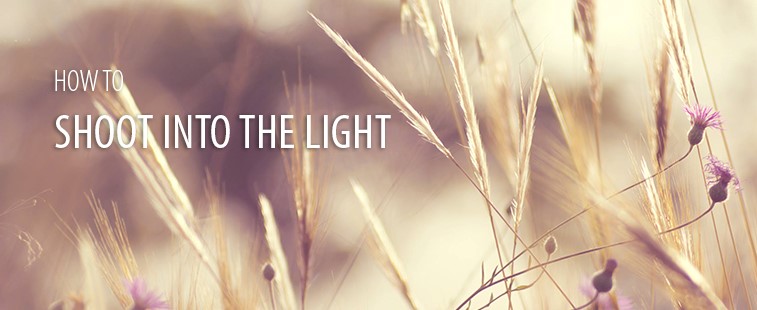
How to take pictures: Shoot into the Light
Summer is a great time to be outside. We have plenty of opportunities to use the light of the sun. One of those is to shoot into the sun (aka the contre-jour technique), and it is a creative way of capturing photos. Shooting into the light can make dreamy, pretty portraits and transform flat, formless landscapes into something much more beautiful. Here are some tips on how to do it.
1. Use spot metering
If your aim is to avoid silhouettes, change your metering mode to ‘Spot’. Spot metering means that your camera will expose whatever is in the centre of the
scene which will likely result in a blown out, overexposed background. If you shoot in RAW you may be able to pull back a lot of the lost detail in the background in editing.
2. Aperture and ISO
Try to shoot at a larger aperture and a low ISO. The low ISO will lower the noise in your picture, and the large aperture will create nice bokeh in
the background further obscuring background details that you might not want visible.
3. Manual mode
Try shooting in full manual mode. Check your exposure level indicator (usually in the bottom of your viewfinder) to tell when the exposure falls on the underexposed (-) or overexposed (+) side of the scale as you change your camera’s settings. Turn on your highlight indicator which will make overexposed highlights “blink” on your LCD or viewfinder. To get soft, dreamy colours on you want your subject to be a little lighter than usual. Aim for a stop or two below the point where the ‘blinks’ appear on your subject.
4. Focus
When shooting into the sun, your camera will struggle to focus on the subject. Try moving so the sun is hidden behind your subject and then autofocus, using focus lock. Then re-compose your picture with the sun in your scene again. Make sure you move only very slightly and sideways, so your subject stays in focus. Make sure you’re using single point AF for a precise way to lock focus.
5. Work with the Surroundings
Use the objects in your background to filter the sunlight. Let it shine through those objects, like trees etc to soften the light and create a nice effect. Change your position to experiment with low and high angles. By stopping down to f/11 and smaller you’ll get a starburst and more detail in the background.
6. Find golden light
When the sun is low in the sky, the light travels through more of the Earth’s atmosphere, and that softens it beautifully. This soft light is warm and flattering to your subjects. This produces more directional light because of the low angle making shadows and scenes look more interesting. The best time to find golden light is approximately an hour after sunrise, and an hour before sunset, depending on the season and weather conditions. (We’ll have more on shooting at ‘golden hour’ in another tutorial.)
7. Rim lighting
This happens when you’re shooting in a backlit situation. If you have a dark background, you can see a faint glow outlining your subject. This is called rim lighting, and it draws attention to your subject by separating it from the background. You will need to change your camera angle and position so that the sun is directly behind your subject.
8. Flare
Flare happens when the light hits your lens, generally in backlit situations. To get flare, experiment with how much sunlight is hitting your lens. Make slight movements to see which angle produces the best looking flare. Different lenses at different apertures also affect the flare result.
9. Use an external flash for portraits
Add light to your subjects face by giving it a little 'pop' of flash. Power the flash down a bit so it enhances the backlit effect of your picture. Use it off-camera for a more natural result. Read more about shooting with flash in our article: Beginner's guide to off-camera flash.
10. Landscapes
Including the sun in your landscapes can add depth and interest to your scene. It can draw the viewer into the scene. Placing the sun at the edges of your picture will obscure it slightly and draw the eye to the beautiful light hitting the scene. In a sunset or sunrise, you might choose to make the sun the focal point near the centre of the frame.
11. Use a Graduated ND Filter
With the sun being so much brighter than the surrounding landscape, a graduated neutral density filter will help to capture a well-exposed image by darkening the sky area in your image. Either a filter with soft graduation or reverse graduated filter will work best.
12. Bracket multiple exposures
Capture well-balanced images when shooting with the sun by bracketing multiple exposures and blend them in photoshop. This works well when the sun is at it’s highest position in the sky because the contrast is higher. Expose one image for the landscape, one for the sky and a darker exposure for the brightest areas.